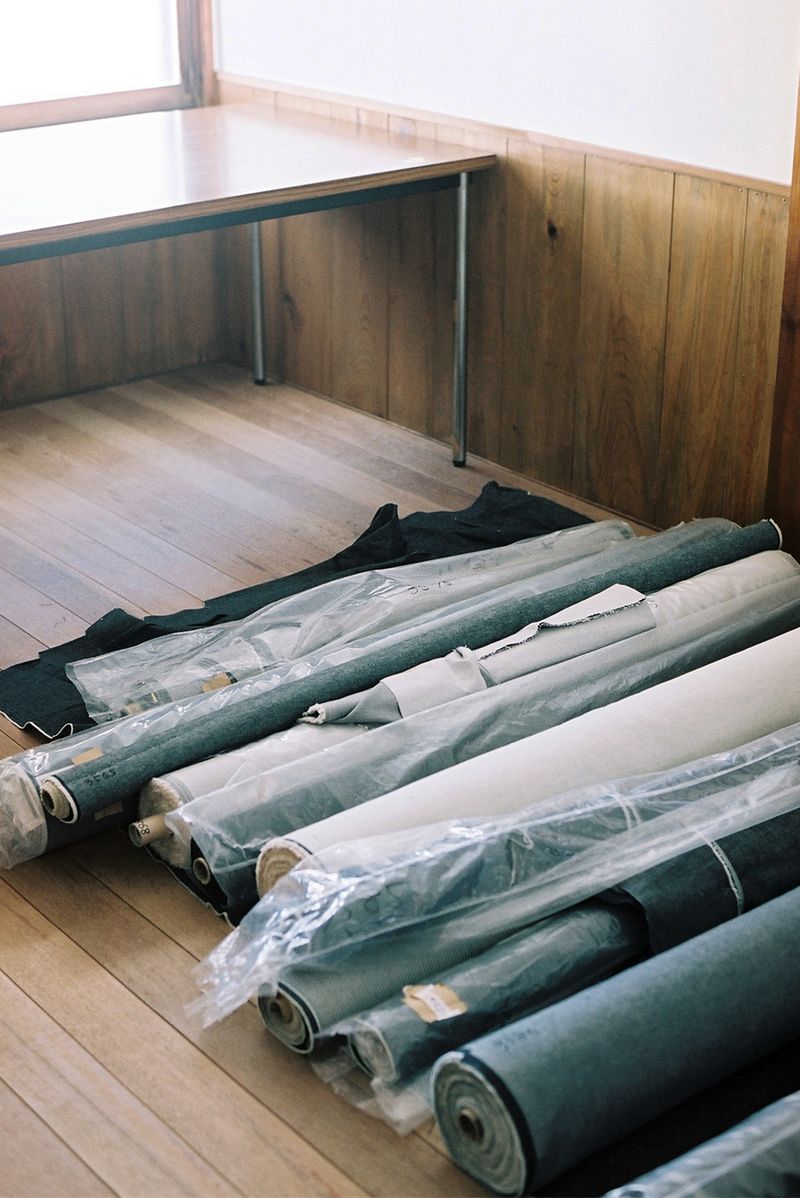THE JOURNAL
Kurashiki, a historic city in Japan’s Okayama Prefecture, on the lip of the Inland Sea, is about as far as you can get from the American Wild West. Not just geographically – the great Pacific Ocean separates it from the western seaboard of the US – but in nearly every other imaginable aspect of life. There’s an entire world between this orderly (if tightly packed) corner of the globe and the lawless, sparsely populated realm of the 19th-century American frontier. For the uninitiated, then, it would seem an unlikely place for MR PORTER’s in-house brand Mr P. to turn to in search of that most American article of clothing: a pair of jeans.
First patented by Messrs Jacob W Davis and Levi Strauss in San Francisco in 1873, the riveted denim jean has become a metaphor for the American way of life. Not just hardwearing and hardworking, but in the hands of mid-century Hollywood, a symbol of rebellion. But what was once worn by Messrs Marlon Brando and James Dean has since been perfected in Japan.
Jeans were first brought to Japan by American GIs following WWII, with second-hand pairs flooding textile markets, leading to a burgeoning demand for US imports. It wasn’t until nearly a decade after anyone thought to ask Mr Brando what he was rebelling against in The Wild One that the manufacture of Japanese jeans began in earnest, pioneered at Betty Smith’s Kurashiki plant, where Mr P.’s selvedge jeans are made today.


While the Japanese certainly had the skillset to master denim – the nation has a long history of dyeing cloth – they didn’t have the equipment needed to deal with this heavy-duty material. At first, production lines were reliant on imported American machinery, but innovations were soon found domestically, spiralling into a self-contained industry that today leads the world – in terms of quality, at least. The toughest denim you can now buy most likely comes from Japan, with the material used for Mr P.’s jeans weighing in at a robust 12oz. As the globalised market moves on to faster and more efficient means of production, Okayama’s focus on traditional methods continues to set it apart. Its selvedge denim in particular has become a prize commodity.
A corruption of “self-edge”, the term selvedge has been applied to fabric since at least the 16th century, describing a piece of cloth that is woven to a short width, and so has no need for an additional finish at its edges to prevent fraying. In the case of denim, this is signified by a contrast trim – often red – which you should be able to note when you turn up a pair of selvedge jeans. (Selvedge is known as akamimi in Japan, which translates as “red ear”.) To this day, these production lines employ old-school shuttle looms that are not only slower than most modern machines, but typically have half the capacity. The result is a product not only of greater quality, but of relative scarcity, further adding to its premium.


However, the weaving is only part of the story. It then takes seven workers using 10 different sewing machines to cut out and construct one pair of jeans. Around 70sq m of cotton is needed to make a single item, and Betty Smith’s assembly line is able to make between 40 and 50 pairs a day. It can take five years for workers to get up to speed with this intricate task. And that’s before you consider the process of washing the jeans, which as you’ll see in the film above, the people of Kurashiki do consider a great deal.
“There is obviously a big difference between jeans manufactured in mass production and products with so much work and care put into them,” says Mr Yasuhiro Oshima, CEO at Betty Smith. Attention to detail is key, especially when you remember what this item of clothing has come to mean. “Jeans are a symbol of freedom,” Mr Oshima tells us, and that freedom comes with a weight beyond its 12oz.
What this industrial process can’t guarantee is uniformity. Selvedge denim produced on the same loom can have wildly differing results. So, while every attempt is made to ensure all output meets strict quality control guidelines, each individual pair ends up exactly that – individual. But since the days of Messrs Brando and Dean, isn’t that what we’re all striving for?
